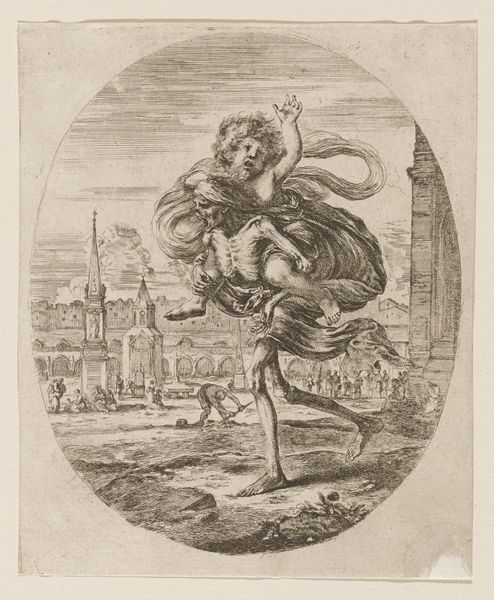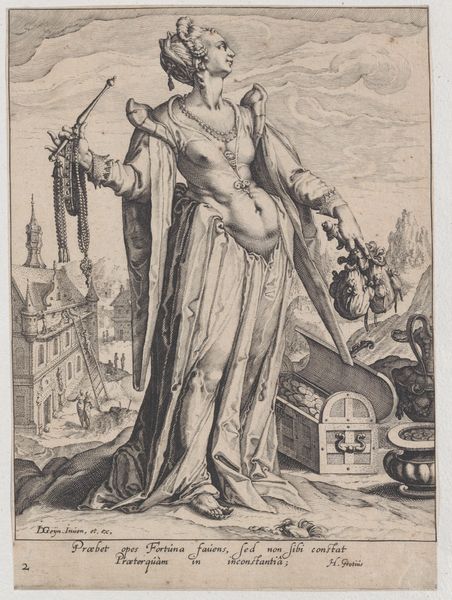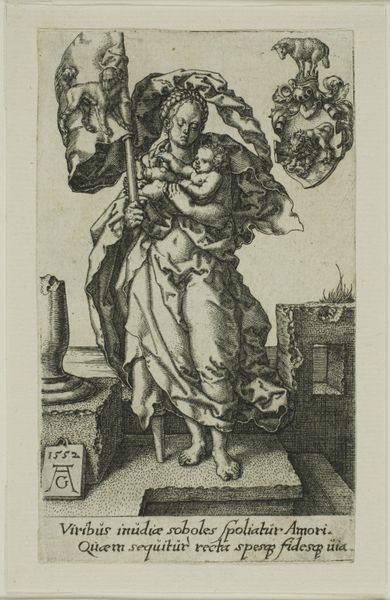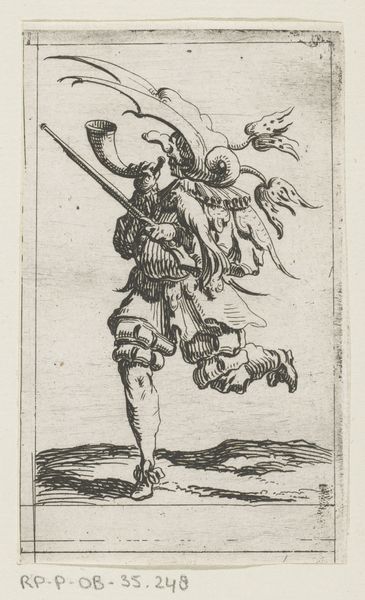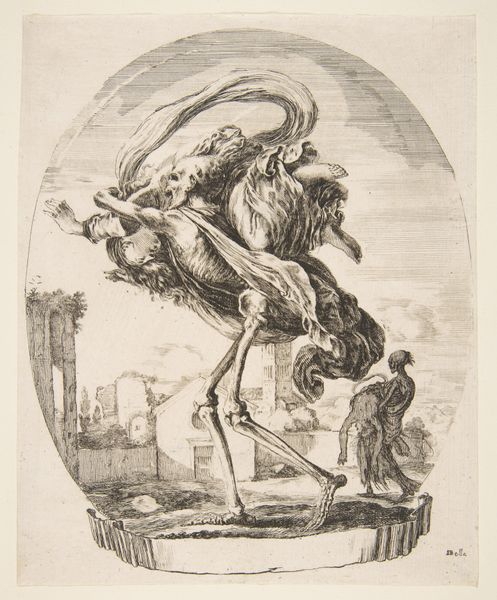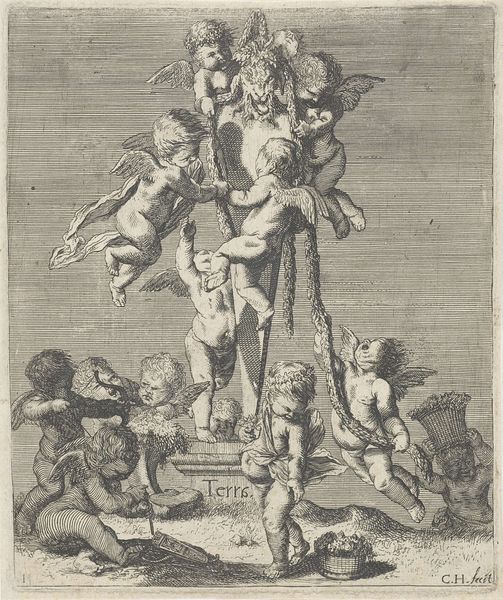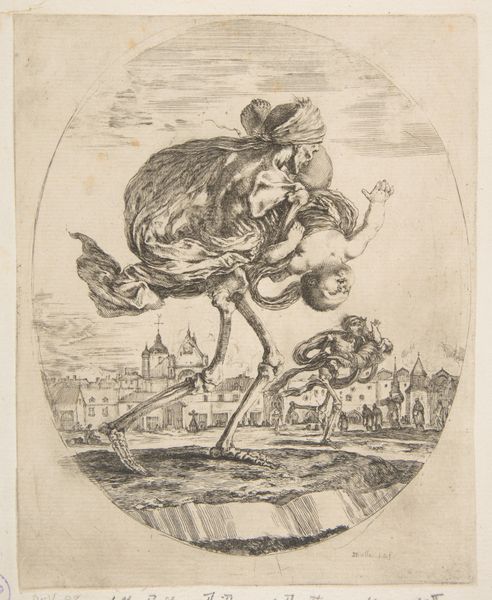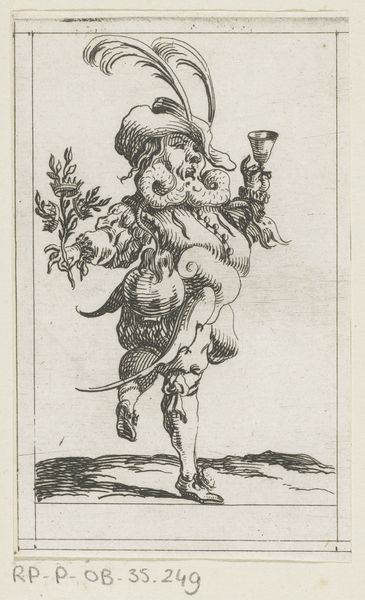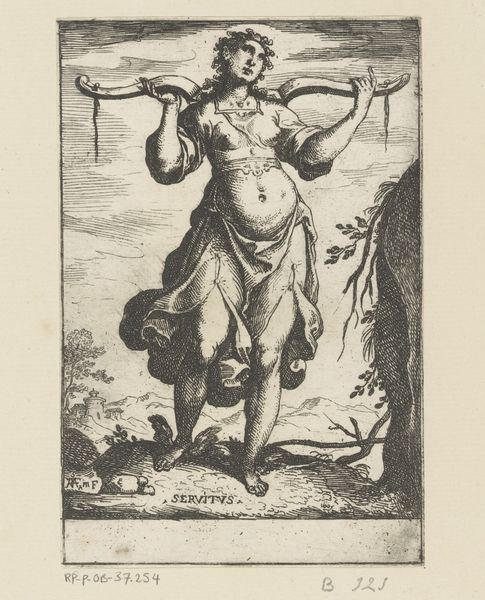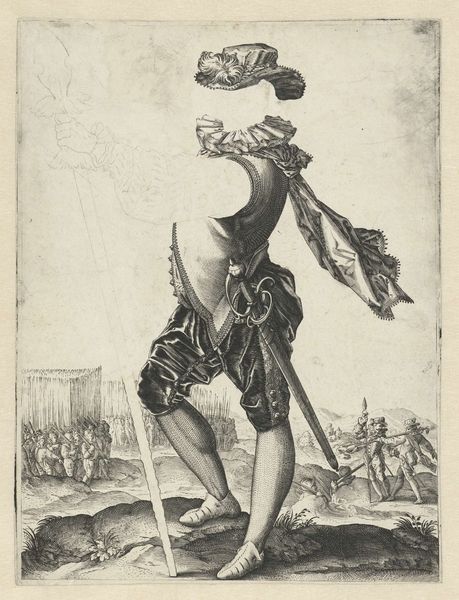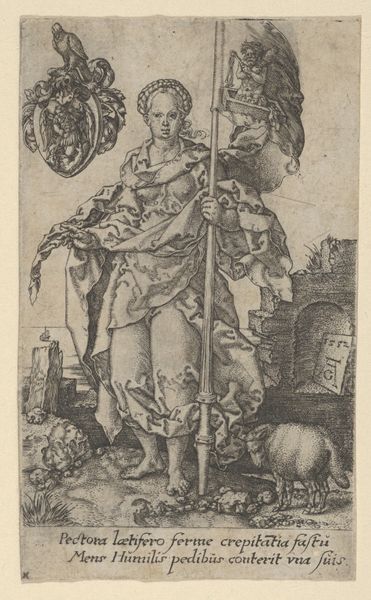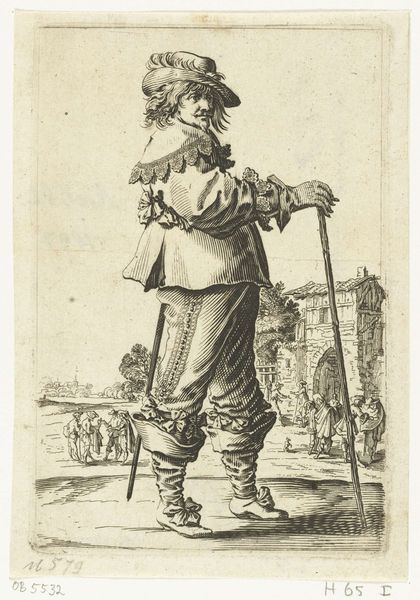
Death carrying a child, from 'The five deaths' (Les cinq Morts) 1610 - 1664
0:00
0:00
drawing, print, etching, engraving
#
drawing
#
ink drawing
#
allegory
#
baroque
# print
#
etching
#
figuration
#
history-painting
#
engraving
Dimensions: Sheet (trimmed within platemark): 7 in. × 5 13/16 in. (17.8 × 14.7 cm)
Copyright: Public Domain
Editor: Here we have Stefano della Bella's "Death carrying a child, from 'The five deaths'," created sometime between 1610 and 1664. It's an etching, an ink drawing. The image is unsettling but beautifully rendered. The figure of Death is so frail, almost skeletal, yet carrying a surprisingly vital child. What strikes you about it? Curator: What strikes me is how this piece reflects the means of its production. Engraving, like other crafts deemed 'minor,' played a major role in disseminating imagery and ideas. Here, we see a mass-produced print tackling grand themes. Think of the labour involved—the engraver’s skill transforming base materials into an image of 'high' allegory. How does that blurring of the lines, that accessibility, change our understanding of what art *is*? Editor: That's a good point! I usually think of drawings as being more 'unique' than prints. Does the printmaking process change how we interpret the message? Curator: Absolutely! Consider the intended audience. Who would purchase this print? Likely someone of relatively modest means, wanting to contemplate death in their own home. It’s a far cry from a commissioned painting viewed only by the elite. And how does the materiality of ink on paper shape the emotional impact, compared to, say, a sculpture? Does it make it more immediate, more democratic? Editor: I guess so! Knowing it was mass-produced does make the message seem… broader, somehow. More accessible. It connects it to the everyday lives of more people. It also changes how you think of della Bella, from individual 'artist' to something more integrated with society. Curator: Exactly! This isn’t just about one man’s vision. It's about the entire system of artistic production, the commerce of imagery, and how both shape our understanding of life and death. This challenges the notion of the lone genius and asks us to look at art as a product of complex social forces. Editor: That makes so much sense. Seeing it as a product of the printmaking industry rather than a singular artistic vision shifts the entire focus. Thanks, I've learned a lot! Curator: It was my pleasure. Remember to consider the means of production whenever you look at a work of art. It's always saying something, if you know how to listen.
Comments
No comments
Be the first to comment and join the conversation on the ultimate creative platform.
